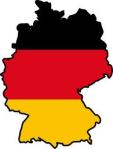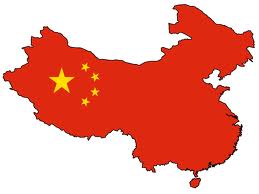December 12, 2012

 Berlin-based Germany Trade & Invest, the economic development agency of the Federal Republic of Germany, confirms Chinese companies are building factories in Germany. Citing an example, the agency mentioned that Chinese subsidiary Jade Werke will begin production of steel fundaments for offshore wind parks in Germany as early as 2013. The company is investing €50 million in a production plant in Wilhelmshaven, with construction planned to begin this summer.
Berlin-based Germany Trade & Invest, the economic development agency of the Federal Republic of Germany, confirms Chinese companies are building factories in Germany. Citing an example, the agency mentioned that Chinese subsidiary Jade Werke will begin production of steel fundaments for offshore wind parks in Germany as early as 2013. The company is investing €50 million in a production plant in Wilhelmshaven, with construction planned to begin this summer.
According to the agency, last year, Germany installed 2,007 MW of wind energy capacity, bringing its total capacity to 29 GW. It added that the 30% growth of new installations still comes primarily from the onshore segment, but offshore wind will account for a growing share in the coming years.
This year alone, construction is expected to begin on six new offshore parks totaling 1,660 MW capacity along Germany’s North Sea and Baltic Sea coastlines. Growth rates in the onshore segment were strong last year, the policy framework has been improved, and the offshore market ready to take off, said Anne Braeutigam, wind energy expert at Berlin-based Germany Trade & Invest.
 Leave a Comment » |
Leave a Comment » |  Wind power | Tagged: china, Chinese building wind power factories in Germany, investment, new offshore wind parks on German coast, offshore wind growing in Germany, Offshore wind power |
Wind power | Tagged: china, Chinese building wind power factories in Germany, investment, new offshore wind parks on German coast, offshore wind growing in Germany, Offshore wind power |  Permalink
Permalink
 Posted by anaghabhambri
Posted by anaghabhambri
August 30, 2011
 According to China’s National Energy Administration, the country will increase its offshore wind farm installed capacity to 5 GW in the next five years and create a complete technology and industrial chain to service the growing wind turbine sector.
According to China’s National Energy Administration, the country will increase its offshore wind farm installed capacity to 5 GW in the next five years and create a complete technology and industrial chain to service the growing wind turbine sector.
A renewable energy strategy in the nation’s 12th Five-Year Plan indicates China’s offshore sector is about to enter “a phase of large-scale development” and is estimated to reach 30 GW in 2020. Although China overtook the US last year as the nation with the most installed wind farm capacity, reaching 43 GW in total, almost all of that was generated from its onshore sector.
The National Energy Bureau (NEB) will launch preparation work for the second public bidding on offshore wind power concession projects in the second half year of 2011 and is scheduled to complete the bidding in the first half year of 2012. The total construction scale will be between 1.5 GW and 2 GW. China’s first offshore project, the East Sea Bridge Offshore Wind Farm, having a capacity of 102 MW, started operating in June 2010. It comprises 34 units of 3-MW Sinovel turbines.
 Leave a Comment » |
Leave a Comment » |  Renewable energy, Wind power | Tagged: china, green jobs, National Energy Bureau(NEB), Offshore wind power, RE bidding process |
Renewable energy, Wind power | Tagged: china, green jobs, National Energy Bureau(NEB), Offshore wind power, RE bidding process |  Permalink
Permalink
 Posted by anaghabhambri
Posted by anaghabhambri
August 30, 2011
China is now the world leader in renewable energy investment, as developing countries overtook developed ones for the first time in the value of major “green” projects in 2010, according to a report released in Frankfurt. Renewable energy industry saw a great boom last year, with a record $211 billion worldwide flowing into the sector, surging about 30 per cent year-on-year, said the report titled “Global Trends in Renewable Energy Investment 2011.”
The report was based on a study jointly conducted by the Frankfurt School of Finance and Management, the United Nations Environment Program (UNEP) and the news service Bloomberg New Energy Finance.
In 2010, a total of $48.9 billion were directed into green energy and technology research, particularly for wind farms, inChina. The report said wind energy projects are attracting the largest investment worldwide, with the volume jumping 30 per cent to $94.7 billion last year. Solar energy bagged $86 billion, while energy production from biomass and waste took the third place with $11-billion investments.
 Leave a Comment » |
Leave a Comment » |  Renewable energy | Tagged: Bloomberg New Energy Finance, china, Frankfurt School of Finance and Management, investment, RE Global trends, Renewable energy, Study, UNEP |
Renewable energy | Tagged: Bloomberg New Energy Finance, china, Frankfurt School of Finance and Management, investment, RE Global trends, Renewable energy, Study, UNEP |  Permalink
Permalink
 Posted by anaghabhambri
Posted by anaghabhambri
June 15, 2011
A report released by an American organisation, Pew Charitable Trust has projected that on a business-as-usual basis, $1.7 trillion would be invested globally in renewable technologies such as solar, wind, biomass and other low-carbon forms of electricity generation over the next decade. However, this would still be $546 billion short if the G-20 governments do not adopt more aggressive policies toward climate change.
The report, titled Global Clean Power: A $2.3 Trillion Opportunity, models three scenarios over the span of the next decade: A continuation of the status quo, the adoption of Copenhagen policies, and more enhanced clean energy policies. The highlight of the document is the claim that the UK will strengthen its position as an investor in green technology globally, increasing its spending by 260 per cent over the next decade. However, it will still fall short of India, which will nudge ahead into third place by 2020, behind China and the US.
Asian countries – particularly China and India – are expected to pour investment into clean energy regardless of what policies are adopted. Under the ‘enhanced policy scenario’, China, which last year became the world’s biggest investor in clean energy, is expected to triple spending over the next decade to over $ 90 bn per year by 2020, with more than half going on wind power. Chinese spending is forecast to be almost twice that of the second biggest spender, the US. Mature markets such as Germany, where renewables have enjoyed significant investment for some time, are expected to see investment levels decline over the decade.
 Leave a Comment » |
Leave a Comment » |  Renewable energy | Tagged: 2020, china, Clean energy, G-20, India, investment, Pew Charitable Trust, policies, Report, UK |
Renewable energy | Tagged: 2020, china, Clean energy, G-20, India, investment, Pew Charitable Trust, policies, Report, UK |  Permalink
Permalink
 Posted by anaghabhambri
Posted by anaghabhambri
April 14, 2011
The Alternative Energy Development Board of Pakistan has revealed that the 2,300 MW of power project deals signed between the country and China are in the danger of being shelved unless China is offered competitive tariffs. The two countries had signed an MoU for 2,000 MW of wind and 300 MW of solar energy generation during a visit from Chinese Premier Wen Jiabao in 2010. The agreement for the two projects was signed between the Three Gorges Corporation of China (CTGPC) and the Alternative Energy Development Board (AEDB) of the Ministry of Water and Power.
Of the total of 2,300 MW planned, 1,000 MW of wind and 100 MW of solar energy were to be generated in Sindh, while 1,000 MW of wind and 200 MW of solar were planned for Punjab, over the next three years. China was to make the entire investment and therefore was concerned about the affordability of the projects. If the final price is not affordable then the agreement is expected to fall through.
However, the silver lining for Pakistan was a joint-venture agreement with Sanir, an Iranian public company with a Pakistani private firm, for the construction of a 1,000 MW wind farm in the province of Sindh. Sanir has already bagged a contract for the construction of another 50-MW wind power plant in Pakistan and for the development of electricity infrastructure.
 Leave a Comment » |
Leave a Comment » |  Renewable energy, Solar power, Wind power | Tagged: china, investment, Pakistan, Sanir, Three Gorges Corporation of China |
Renewable energy, Solar power, Wind power | Tagged: china, investment, Pakistan, Sanir, Three Gorges Corporation of China |  Permalink
Permalink
 Posted by anaghabhambri
Posted by anaghabhambri
April 14, 2011

 According to the Global Wind Energy Council (GWEC), China surpassed the US to become the country with the highest installed wind-power capacity by adding 16 GW of new capacity in 2010. With a 62 per cent year-on-year growth rate, China has taken its total installed capacity to 41.8 GW. Comparatively, USA installed about 5 GW of new wind-power capacity last year, taking its total installed capacity to 40.2 GW. It is believed that the US investors’ confidence in the renewable energy sector suffered because the country failed to enact a binding climate change limiting legislation. China is now looking to increase its cumulative grid-connected installed wind-power capacity to 55 GW in 2011 and increase it to 100 GW by 2015, and 200 GW by 2020.
According to the Global Wind Energy Council (GWEC), China surpassed the US to become the country with the highest installed wind-power capacity by adding 16 GW of new capacity in 2010. With a 62 per cent year-on-year growth rate, China has taken its total installed capacity to 41.8 GW. Comparatively, USA installed about 5 GW of new wind-power capacity last year, taking its total installed capacity to 40.2 GW. It is believed that the US investors’ confidence in the renewable energy sector suffered because the country failed to enact a binding climate change limiting legislation. China is now looking to increase its cumulative grid-connected installed wind-power capacity to 55 GW in 2011 and increase it to 100 GW by 2015, and 200 GW by 2020.
 Leave a Comment » |
Leave a Comment » |  Renewable energy, Wind power | Tagged: capacity, china, US, Wind |
Renewable energy, Wind power | Tagged: capacity, china, US, Wind |  Permalink
Permalink
 Posted by anaghabhambri
Posted by anaghabhambri
April 14, 2011
Spanish wind turbine manufacturer Gamesa earmarked an investment of over €90 million in China from 2010-2012 in order to reinforce its manufacturing capacities in the country. The company already has four wind turbine components plants with a 3.18 GW project in pipeline. Now it plans to bring two more factories on stream where it is targeting a production capacity of 1.5 GW of turbines per year in 2011. In sync with its expansion plans, Gamesa also bagged an order to supply 1.32 GW of turbines for wind power projects being developed by Chinese companies Guangdong Nuclear Wind and Datang Renewable Power from 2010-2013.
At the same time, American company GE signed a joint venture with HEC, a subsidiary of the power plant equipment giant Harbin Power Equipment, under which the new company will manufacture GE-designed wind turbines for near-shore and offshore applications in China. GE will hold 49 per cent of the stake and 51 per cent will belong to HEC. The duo will also work to develop wind turbines for offshore projects in China using direct drive technology.
 Leave a Comment » |
Leave a Comment » |  Renewable energy, Wind power | Tagged: china, Datang Renewable power, Gamesa, GE, Guangdong Nuclear Wind, HEC, investment, Offshore |
Renewable energy, Wind power | Tagged: china, Datang Renewable power, Gamesa, GE, Guangdong Nuclear Wind, HEC, investment, Offshore |  Permalink
Permalink
 Posted by anaghabhambri
Posted by anaghabhambri
October 19, 2010
Wind turbine supplier Suzlon Energy has opened a new research, development & technology centre in Germany. The company plans to have a total employee strength of 200 in the new centre, which will include over 120 employees of Suzlon Energy GmbH. Suzlon GmbH is a joint venture between Suzlon’s arm Suzlon Wind Energy and Volkswind Bulgaria GmbH, which is a subsidiary of Volkswind GmbH.
Besides, the company plans to expand capacity at its plant in China as it expects to return to profit this financial year. Suzlon will manufacture turbines capable of generating a combined 1,000 MW in China by 2013, Suzlon Chairman Tulsi Tanti said in Tianjin, China. That’s a 67 per cent increase from the current capacity of 600 MW, which Tanti said will be used fully next year.
 1 Comment |
1 Comment |  Renewable energy, Wind power | Tagged: china, Germany, green jobs, Renewable, suzlon, Wind |
Renewable energy, Wind power | Tagged: china, Germany, green jobs, Renewable, suzlon, Wind |  Permalink
Permalink
 Posted by anaghabhambri
Posted by anaghabhambri
June 16, 2010
China overtook the United States in renewable energy investments for the first time ever last year becoming the world’s largest market for clean energy projects. Renewable energy investments in China, mostly wind farms – totalled $34.6 billion in 2009. In the United States, $18.6 billion was spent.
Worldwide $162 billion was spent on renewable energy, down just 6.6 per cent from the previous year. In 2010, a 25 per cent increase in renewable energy investments to $200 billion is expected.
 1 Comment |
1 Comment |  Renewable energy, Wind power | Tagged: china, Energy, investment, Renewable |
Renewable energy, Wind power | Tagged: china, Energy, investment, Renewable |  Permalink
Permalink
 Posted by anaghabhambri
Posted by anaghabhambri

 Berlin-based Germany Trade & Invest, the economic development agency of the Federal Republic of Germany, confirms Chinese companies are building factories in Germany. Citing an example, the agency mentioned that Chinese subsidiary Jade Werke will begin production of steel fundaments for offshore wind parks in Germany as early as 2013. The company is investing €50 million in a production plant in Wilhelmshaven, with construction planned to begin this summer.
Berlin-based Germany Trade & Invest, the economic development agency of the Federal Republic of Germany, confirms Chinese companies are building factories in Germany. Citing an example, the agency mentioned that Chinese subsidiary Jade Werke will begin production of steel fundaments for offshore wind parks in Germany as early as 2013. The company is investing €50 million in a production plant in Wilhelmshaven, with construction planned to begin this summer.


 Posted by anaghabhambri
Posted by anaghabhambri 

 According to the Global Wind Energy Council (GWEC), China surpassed the US to become the country with the highest installed wind-power capacity by adding 16 GW of new capacity in 2010. With a 62 per cent year-on-year growth rate, China has taken its total installed capacity to 41.8 GW. Comparatively, USA installed about 5 GW of new wind-power capacity last year, taking its total installed capacity to 40.2 GW. It is believed that the US investors’ confidence in the renewable energy sector suffered because the country failed to enact a binding climate change limiting legislation. China is now looking to increase its cumulative grid-connected installed wind-power capacity to 55 GW in 2011 and increase it to 100 GW by 2015, and 200 GW by 2020.
According to the Global Wind Energy Council (GWEC), China surpassed the US to become the country with the highest installed wind-power capacity by adding 16 GW of new capacity in 2010. With a 62 per cent year-on-year growth rate, China has taken its total installed capacity to 41.8 GW. Comparatively, USA installed about 5 GW of new wind-power capacity last year, taking its total installed capacity to 40.2 GW. It is believed that the US investors’ confidence in the renewable energy sector suffered because the country failed to enact a binding climate change limiting legislation. China is now looking to increase its cumulative grid-connected installed wind-power capacity to 55 GW in 2011 and increase it to 100 GW by 2015, and 200 GW by 2020.